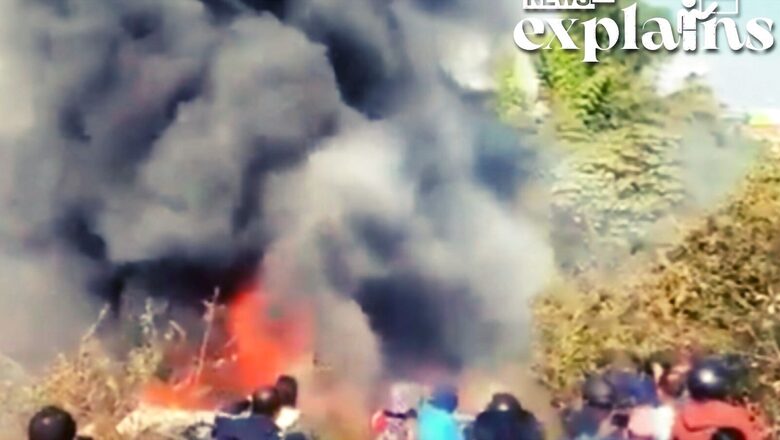
views
At least 45 people are feared dead after a 72-seater passenger aircraft crashed on the runway at Pokhara International Airport in Nepal. The aircraft was carrying 68 passengers and four crew members crashed between the old airport and the Pokhara International Airport.
Sources said several Indians were on board, as well and top Nepal airport authority officials said a helicopter rescue operation is underway.
Amid the development, a look at what determines survivability in a plane crash:
How Likely are You to Survive a Plane Crash?
According to a report by BBC, there is no clear-cut answer. The report says it depends entirely on the circumstances.
But when the US National Transportation Safety Board did a review of national aviation accidents from 1983-1999, it found that more than 95% of aircraft occupants survived accidents, including 55% in the most serious incidents, the report said.
The chances largely depend on factors like the presence of fire, the altitude a mishap takes place at, and its location.
The European Transport Safety Council estimated that 90% of aircraft accidents were technically survivable in a study in 1996.
#WATCH | A passenger aircraft crashed at Pokhara International Airport in Nepal today. 68 passengers and four crew members were onboard at the time of crash. Details awaited. pic.twitter.com/DBDbTtTxNc— ANI (@ANI) January 15, 2023
In the two decades since these two studies, airline safety has improved even further, with fatal accidents steadily declining, the report argues.
What determines if a crash is survivable?
The BBC quoted Tom Farrier, former director of safety at the Air Transport Association, on three general conditions help determine whether an accident is survivable:
– Whether the forces encountered by human occupants are within the limits of human tolerance
– Whether the structures surrounding them (i.e. the plane) remain substantially intact
– Whether the post-crash environment presents an immediate threat to occupants or rescuers
The report sums up: It depends on how bad any impact was for the body, how much damage was done to the aircraft, and whether the wreckage and environment around it are safe.
Asked if it was worse to crash on land or sea, aviation consultant Adrian Gjertsen told BBC it has more to do with the proximity of rescue services than the surface.
“For instance, during the incident on the Hudson River, there were rescue services readily available. But if you’re in the middle of an ocean there’s going to be more of a problem because of simply getting back to dry land,” he told the BBC.
What Do Experts Say on Surviving Plane Crashes?
There are a number of things that may improve one’s chance of surviving a plane crash.
- According to a report by Readers’ Digest, one should leave their carry-on bag on the plane. Flight crews ask passengers to keep their luggage clear of the aisles so it doesn’t block an escape route in the event of an evacuation. With only 90 seconds to escape a burning building, the precious time spent searching for luggage could mean the difference between life and death for someone, the report says.
- The report further states that as per a Popular Mechanics study of 20 commercial jet crashes involving both fatalities and survivors, passengers seated in the rear cabin (behind the wings) had a 69 percent chance of survival, compared to 49 percent for those in first class. But the report says exit rows are possibly the safest seats on the plane. In the event of an evacuation, the closer one is to the exit, the more likely they will survive.
- Boeing discovered that passengers who both wore their seat belts and assumed a brace position (feet flat, head cradled against their knees or the seat in front of them if possible) were more likely to survive a crash in a 2015 crash simulation. Those who were not wearing seat belts or bracing suffered serious head injuries, while those who were not wearing seat belts or bracing died on impact.
- During a collision it is also advised to put on the oxygen mask as soon as it drops, the report says. The drop in oxygen during a cabin pressure loss can knock you out in as little as 20 seconds.
Read all the Latest Explainers here




















Comments
0 comment